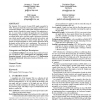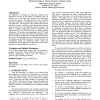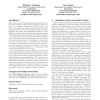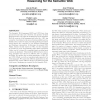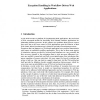WWW
2005
ACM
15 years 7 days ago
2005
ACM
The Semantic Web consists of many RDF graphs nameable by URIs. This paper extends the syntax and semantics of RDF to cover such Named Graphs. This enables RDF statements that desc...
WWW
2005
ACM
15 years 7 days ago
2005
ACM
The difficulty of developing and deploying commercial web applications increases as the number of technologies they use increases and as the interactions between these technologie...
WWW
2005
ACM
15 years 7 days ago
2005
ACM
In this paper, we focus on the development of a framework for automatic metadata generation. The first step towards this framework is the definition of an Application Programmer I...
WWW
2005
ACM
15 years 7 days ago
2005
ACM
Many modern natural language-processing applications utilize search engines to locate large numbers of Web documents or to compute statistics over the Web corpus. Yet Web search e...
WWW
2005
ACM
15 years 7 days ago
2005
ACM
Data referring to cultural calendars such as the widespread Gregorian dates but also dates after the Chinese, Hebrew, or Islamic calendars as well as data referring to professiona...
WWW
2005
ACM
15 years 7 days ago
2005
ACM
Existing Web browsers handle security errors in a manner that often confuses users. In particular, when a user visits a secure site whose certificate the browser cannot verify, th...
WWW
2005
ACM
15 years 7 days ago
2005
ACM
The Semantic Web languages RDFS and OWL have been around for some time now. However, the presence of these languages has not brought the breakthrough of the Semantic Web the creat...
WWW
2005
ACM
15 years 7 days ago
2005
ACM
This paper describes the eBag infrastructure, which is a generic infrastructure inspired from work with school children who could bene t from a electronic schoolbag for collaborat...
WWW
2005
ACM
15 years 7 days ago
2005
ACM
d abstract) *
WWW
2005
ACM
15 years 7 days ago
2005
ACM
While many works have been devoted to service matchmaking and modeling nonfunctional properties, the problem of matching service requests to offers in an optimal way has not yet b...
